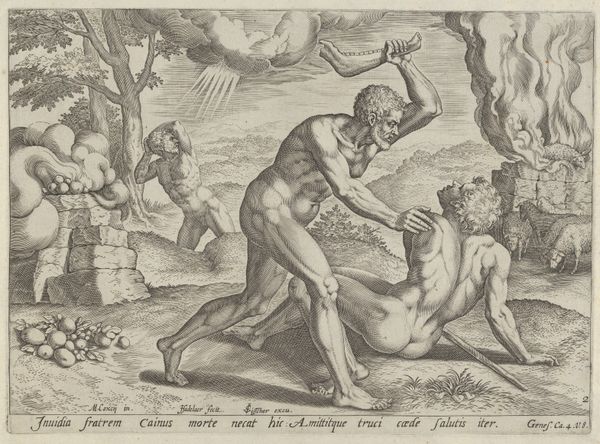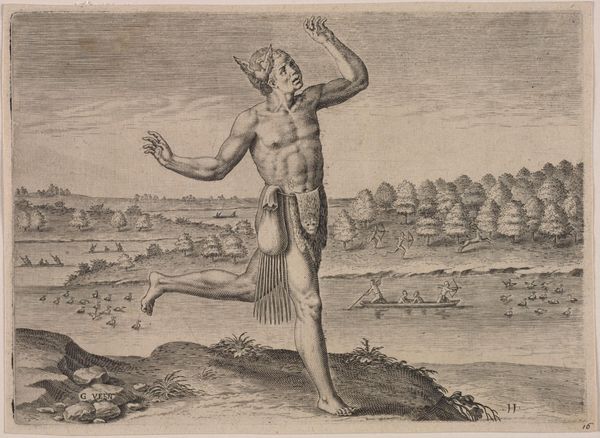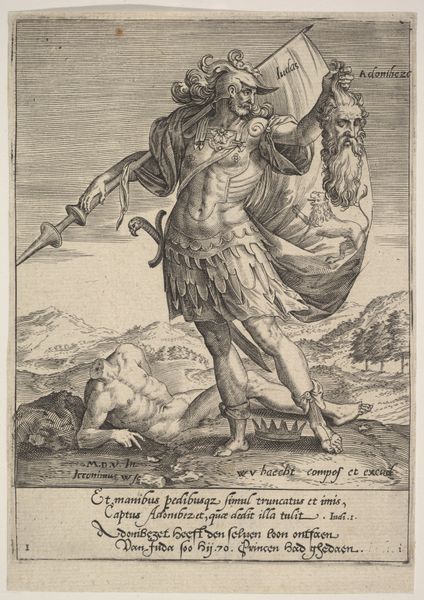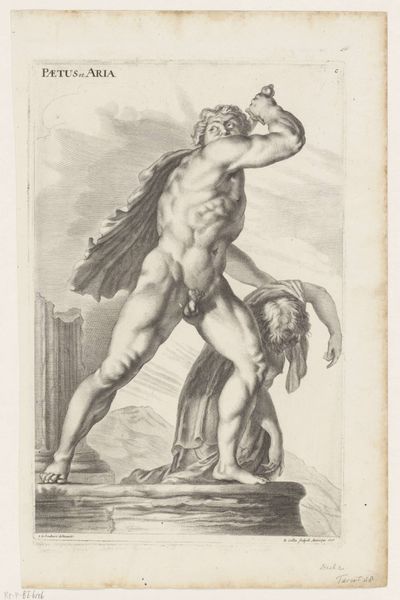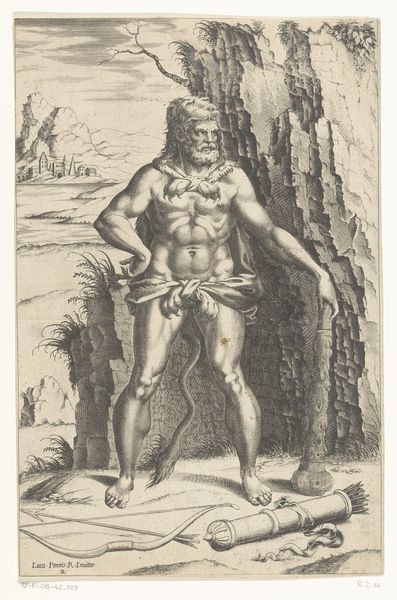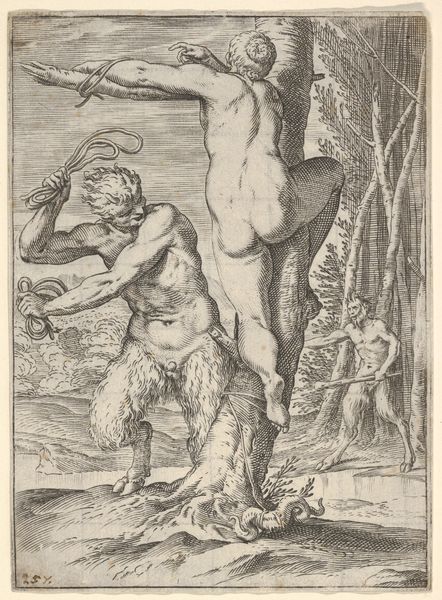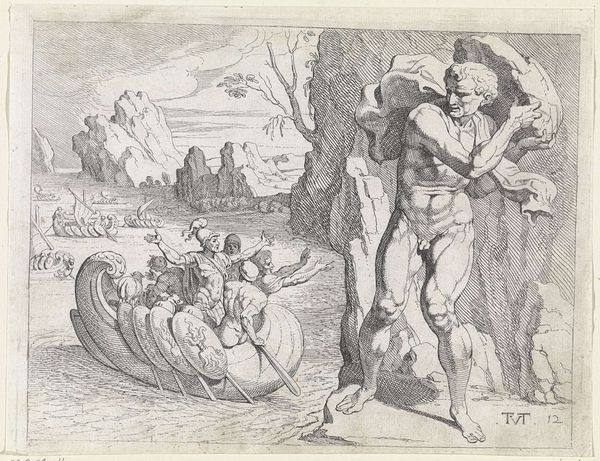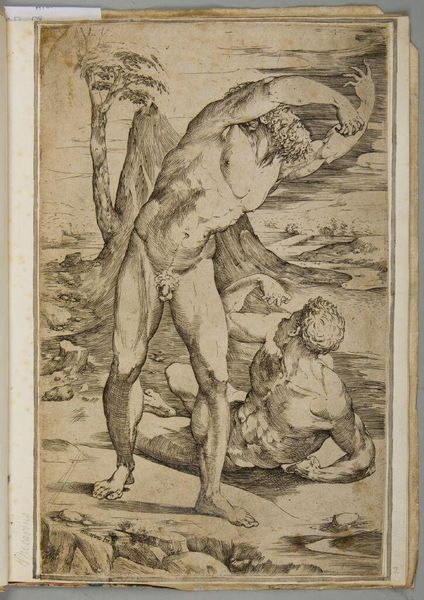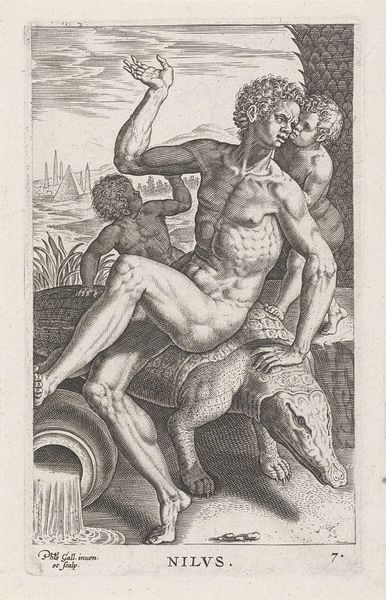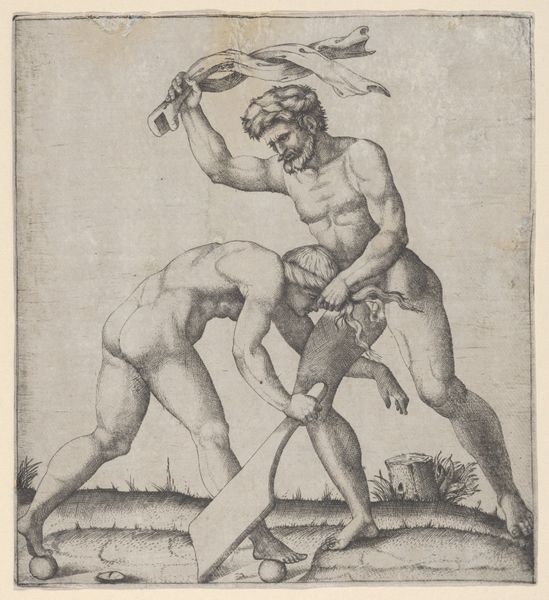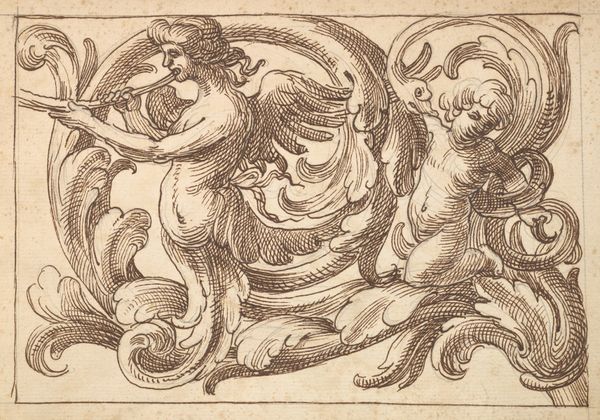
print, engraving
#
allegory
#
baroque
# print
#
landscape
#
figuration
#
engraving
#
erotic-art
Dimensions: height 95 mm, width 137 mm
Copyright: Rijks Museum: Open Domain
Editor: So, this is "Sater" by Antonio Tempesta, made before 1650. It's an engraving held at the Rijksmuseum. The satyr's pose is striking, almost like he's presenting something, but the whole scene feels…restrained by the medium, I guess. What catches your eye in this piece? Curator: What I find compelling is how the material process, the engraving technique itself, shapes the meaning here. The labor involved in creating such detail on a metal plate, the repetitive mark-making – it domesticates the wildness associated with the satyr. Notice how the crisp lines contain and define this mythical creature. It’s almost as though the artist is trying to control something untamable through the very act of creation. Do you see that tension? Editor: I do. The detail *is* impressive, and now that you mention it, the careful shading does seem to 'tame' him. Like, a wild creature rendered with such...precision. Curator: Exactly. Consider the social context, too. Who would have commissioned this print? Who consumed it? Likely a wealthy patron interested in classical mythology, but viewing it through a lens of order and control. The print becomes a commodity, transforming the erotic freedom of the satyr into a manageable, collectible object. It's about possession, not just of the image, but of the idea it represents. Editor: That's a fascinating way to think about it - turning myth into something...consumable. Curator: Yes, the labor of creation and its distribution channels changed not just what was made, but its entire meaning in society. I used to only consider how engravings served an economic and marketing need. Now, after considering this approach, I recognize it reflects how art serves also a taming function to societal values, which Tempesta delivers with fine, precise lines. Thank you.
Comments
No comments
Be the first to comment and join the conversation on the ultimate creative platform.

